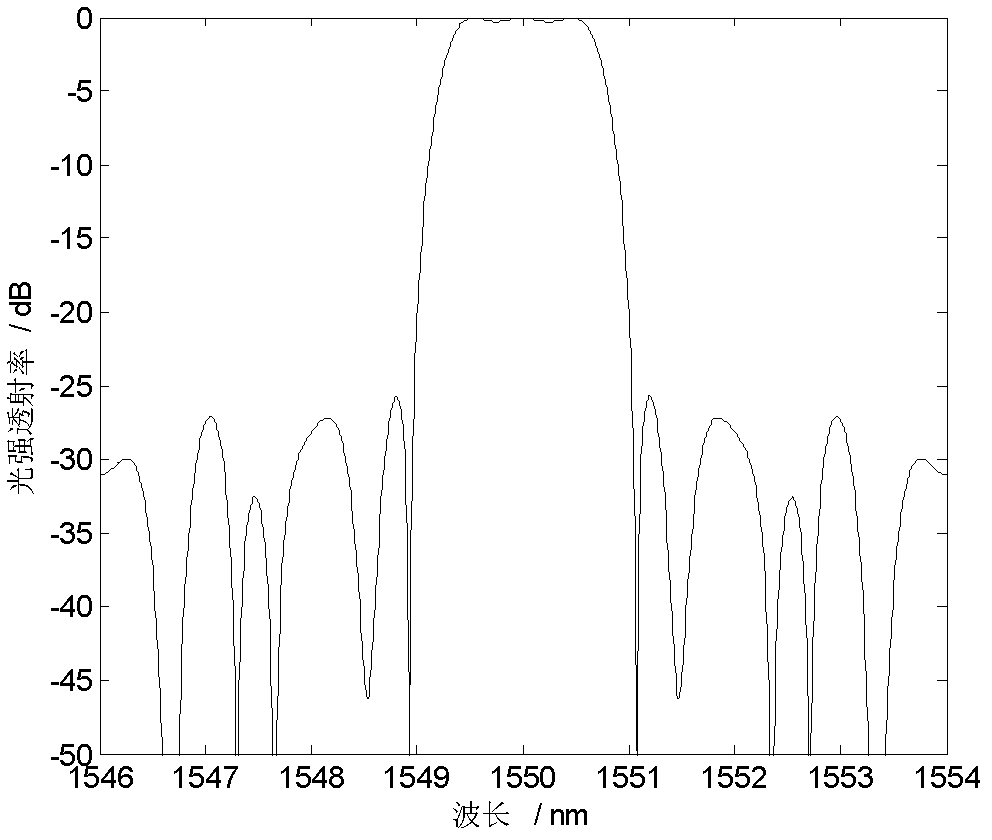Electro-optical bidirectional tunable finite impulse response (FIR) filter and discrete voltage determination method thereof
A filter and electro-optical technology, applied in the direction of electrical components, impedance networks, digital technology networks, etc., can solve the problems of non-tunable filter networks and low flexibility
- Summary
- Abstract
- Description
- Claims
- Application Information
AI Technical Summary
Problems solved by technology
Method used
Image
Examples
Embodiment Construction
[0029] The present invention will be further described below in conjunction with the accompanying drawings.
[0030] Such as figure 1 Shown, with λ 0 As the center, the optical signal in the FSR is input from the port 101, passes through the 104 polarization beam splitter, and is divided into two mutually orthogonal polarization modes, the quasi-TE mode and the quasi-TM mode, wherein the quasi-TE mode enters the upper arm polarization-maintaining fiber 106, The quasi-TM mode enters the polarization-maintaining fiber 107 in the lower arm. The signal then enters the polarization conversion unit 108 (i.e. figure 2The unit structure shown), in which the mode conversion occurs, that is, the quasi-TE mode is converted into the quasi-TM mode, and the quasi-TM mode is converted into the quasi-TE mode. The signals are converged at the four-port polarization beam splitter 105, the quasi-TM mode enters the cross waveguide, and the quasi-TE mode enters the straight-through waveguide, ...
PUM
 Login to View More
Login to View More Abstract
Description
Claims
Application Information
 Login to View More
Login to View More - R&D
- Intellectual Property
- Life Sciences
- Materials
- Tech Scout
- Unparalleled Data Quality
- Higher Quality Content
- 60% Fewer Hallucinations
Browse by: Latest US Patents, China's latest patents, Technical Efficacy Thesaurus, Application Domain, Technology Topic, Popular Technical Reports.
© 2025 PatSnap. All rights reserved.Legal|Privacy policy|Modern Slavery Act Transparency Statement|Sitemap|About US| Contact US: help@patsnap.com



